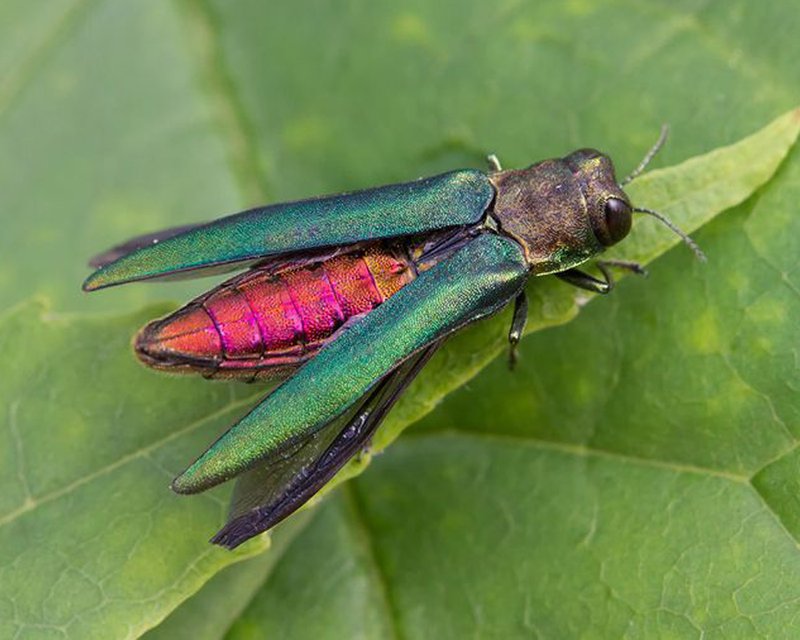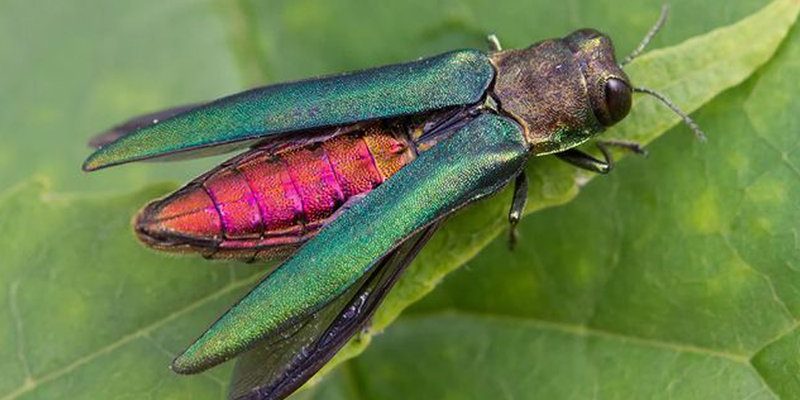
You’ve probably heard of this little green pest making headlines across North America—the Emerald Ash Borer. It’s this tiny beetle that has caused quite a stir among tree lovers, lumberjacks, and environmentalists alike. Imagine a villain in a superhero movie, only this one is as small as your pinky nail. Despite its size, the Emerald Ash Borer has the power to wreak havoc on ash trees, leading to their demise and setting off alarms in ecosystems and communities.
But what’s the big deal about the Emerald Ash Borer, really? Well, it’s not just about green furniture or shady parks. This beetle is responsible for the decline of millions of ash trees, which are crucial to many forests and urban areas. If you love nature or live near an area with ash trees, understanding this pest is vital. So, grab a cup of coffee, and let’s explore the life and impact of the Emerald Ash Borer together.
What is the Emerald Ash Borer?
The Emerald Ash Borer (EAB) is a beetle native to Asia, specifically China, Japan, and Korea. Its scientific name is Agrilus planipennis. This beetle first made its debut on American soil in the early 2000s, likely hitching a ride in wooden crates or packaging. Once it arrived, it quickly turned into an ecological nightmare for ash trees, which includes species like the Green, White, and Black Ash.
What makes the Emerald Ash Borer so dangerous? Well, adult beetles are roughly 1/2 inch long and have a shiny, emerald green color that’s quite striking. But it’s the larvae that cause the real trouble. These tiny, creamy-white larvae munch on the inner bark of ash trees, disrupting the flow of nutrients and water. Picture a tiny, hungry kid going to town on candy; that’s how these larvae eat away at the tree’s lifeline.
Life Cycle of the Emerald Ash Borer
The life cycle of the Emerald Ash Borer is like a fast-paced action movie. It all starts when a female lays her eggs in the crevices of ash bark during the summer months. Within a week or two, those eggs hatch, and the larvae emerge, ready to feast. They go through several growth stages, known as instars, before pupating in the spring. By late spring or early summer, adult beetles break out of the bark and start the cycle all over again.
This rapid life cycle is alarming because it allows populations to grow exponentially. From a few beetles, you can end up with thousands in just a couple of years. Imagine a single acorn growing into a massive oak tree; that’s how quickly they can multiply.
Signs of Infestation
So, how can you tell if your ash trees are under attack by the Emerald Ash Borer? Keep an eye out for these telltale signs:
- D-shaped exit holes: Adult beetles create distinctive oval holes about 1/8 inch wide in the bark as they emerge.
- Canopy dieback: If you notice the leaves at the top of your ash tree turning brown and falling off, it could be a sign of infestation.
- Suckers on the trunk: You might start seeing small shoots growing from the trunk or the base of the tree, which is the tree’s way to compensate for damage.
- Frass: Tiny, sawdust-like material found on the ground around the tree is actually larvae droppings.
Being observant is crucial. Early detection can mean the difference between saving a tree and losing it to these pesky beetles. Just remember, if something feels off with your ash tree, it’s better to investigate than to ignore it.
Impact on Forests and Ecosystems
The invasion of the Emerald Ash Borer has implications that stretch far beyond just losing a few trees. Ash trees are an integral part of many ecosystems, serving as habitats for various species, from birds to insects. When these trees die off, it creates a ripple effect throughout the forest.
Consider the birds that rely on ash trees for nesting or insects that feed on their leaves. When the trees start to vanish, these creatures lose their homes and food sources, leading to population declines. You might say that it’s like cutting the branches off a family tree; everything begins to fall apart.
Management Strategies
Combating the Emerald Ash Borer isn’t an easy task. Many strategies can help manage and mitigate the spread of this pest. One option is using insecticides, but timing and application methods are crucial. You want to target the larvae while they’re actively feeding. This typically means applying treatments in the spring when the trees are beginning to leaf out.
Another effective approach is the removal of infested trees. While it’s a drastic measure, it helps prevent further spreading to healthy ash in the vicinity. Think of it as a quarantine; you want to separate the sick trees from the healthy ones. Besides, removing dead or dying trees can help make space for other species to thrive. It’s a difficult yet necessary choice.
In some cases, researchers are also exploring biological control methods. This involves introducing natural predators of the Emerald Ash Borer, like certain wasp species, into affected areas. While it’s still in the experimental stages, it shows promise as a long-term solution.
How to Protect Your Trees
If you’re a homeowner or community member with ash trees, you might be wondering how to protect them. The first step is to stay informed and monitor your trees closely. Getting a professional tree care service involved can also help you devise a protection plan tailored to your specific situation.
Regularly inspecting your trees for the signs of infestation we discussed is key. If you spot any issues, consult with your local extension office or forestry department. They can give you the best advice for your area and the specific treatments available.
Emerald Ash Borer and Community Action
The fight against the Emerald Ash Borer isn’t just a solo mission; community involvement can make a huge difference. Awareness is essential. Communities can hold educational workshops, distribute informational pamphlets, and even host tree planting events to encourage biodiversity in the area.
Collaborating with local governments can also enhance tree management programs. City officials can create policies aimed at protecting urban forests and promote responsible tree maintenance among residents. When everyone pitches in, the collective effort amplifies the impact.
Table of Important Facts
| Fact | Details |
|---|---|
| Size | About 1/2 inch (12 mm) long |
| Color | Shiny emerald green body |
| Life Cycle Duration | 1 year for complete life cycle |
| Infestation Symptoms | D-shaped holes, canopy dieback, frass |
| Native Range | Northeast Asia |
| U.S. States Affected | Over 30 states, primarily in the Midwest and Northeast |
| First Detected in U.S. | 2002 in Michigan |
The Emerald Ash Borer is more than just a pest; it’s a symbol of how interconnected our ecosystems truly are. The decline of ash trees can alter habitats and disrupt many species that rely on them. As we learn about this tiny beetle—and the significant challenges it presents—we become more prepared to protect our natural environment.
By staying vigilant, informing ourselves, and working together as communities, we can take steps to manage the Emerald Ash Borer. Let’s remember that while the challenge may seem daunting, every effort counts. Together, we can help safeguard our precious trees and the wildlife that depends on them.
FAQ
What trees are affected by the Emerald Ash Borer?
The Emerald Ash Borer primarily targets ash trees. This includes various species, such as Green Ash, White Ash, and Black Ash. It is essential to monitor these trees closely if they are in your vicinity.
How can I identify an Emerald Ash Borer infestation?
Look for signs like D-shaped exit holes on the bark, tree dieback in the canopy, and the presence of frass (sawdust-like material) at the base of the tree. If you see any of these signs, it’s time to get a professional’s help.
Can I treat my ash trees myself?
While you can apply insecticides, it is highly recommended to consult with a professional arborist. They can better assess the situation and recommend the most effective treatment options tailored to your trees.
Is the Emerald Ash Borer harmful to humans?
No, the Emerald Ash Borer is not harmful to humans or pets. However, its impact on trees can have indirect effects on the environment that could affect human activities and health.
Is there a way to save infested trees?
In some cases, it may be possible to save an infested tree through treatment with insecticides if caught early. However, severely infested trees may need to be removed to prevent further spread of the beetle.
How fast does the Emerald Ash Borer spread?
Once it establishes in an area, it can spread rapidly, moving about 15 to 20 miles a year. Human activities, like moving firewood, can accelerate this spread even further.
Are there any natural predators of the Emerald Ash Borer?
Yes, researchers are exploring biological control methods, including introducing certain wasp species that are natural predators of the Emerald Ash Borer. However, this approach is still in the development stage and requires careful monitoring.
What is the economic impact of the Emerald Ash Borer?
The economic impact is significant, affecting timber industries, landscaping businesses, and municipal budgets related to tree removal and management. Local economies can feel this impact acutely, especially in areas where ash trees are a dominant species.
Can my local government help with EAB management?
Yes! Many local governments have programs and resources to help manage the Emerald Ash Borer. They may provide educational materials, treatment programs, or assist in tree removal efforts.
Is it too late to plant new trees if ash trees are removed?
No, it’s never too late to plant new trees! In fact, replacing removed ash trees with diverse species can help promote a healthier, more resilient forest ecosystem.
What are the best practices for recycling or disposing of ash wood?
Always check local regulations before moving or disposing of ash wood. In some areas, you may need to burn the wood or chip it to prevent the spread of EAB. Proper disposal is crucial to managing its spread effectively.

